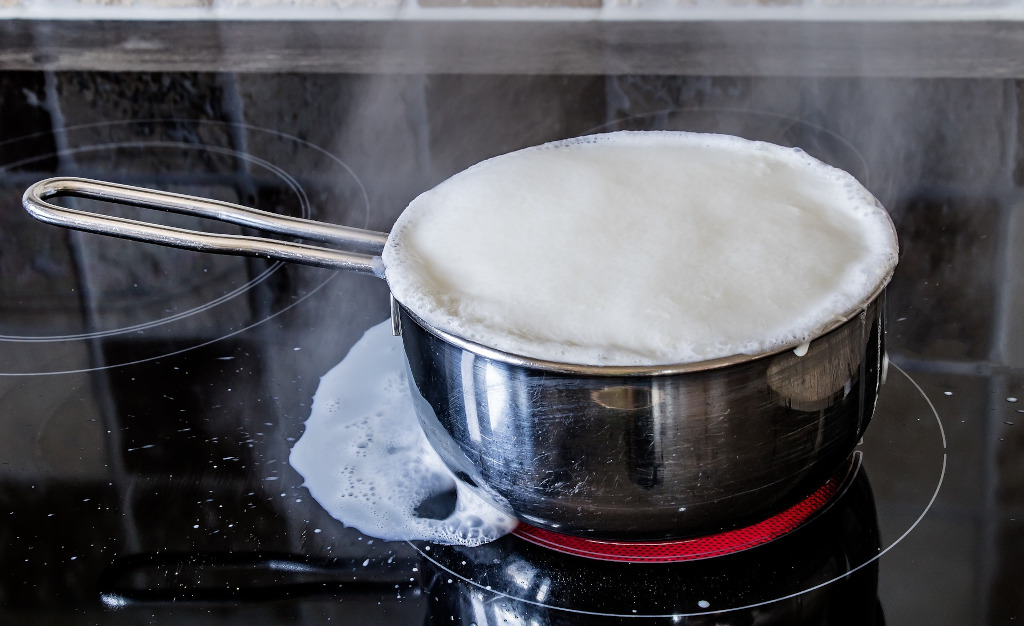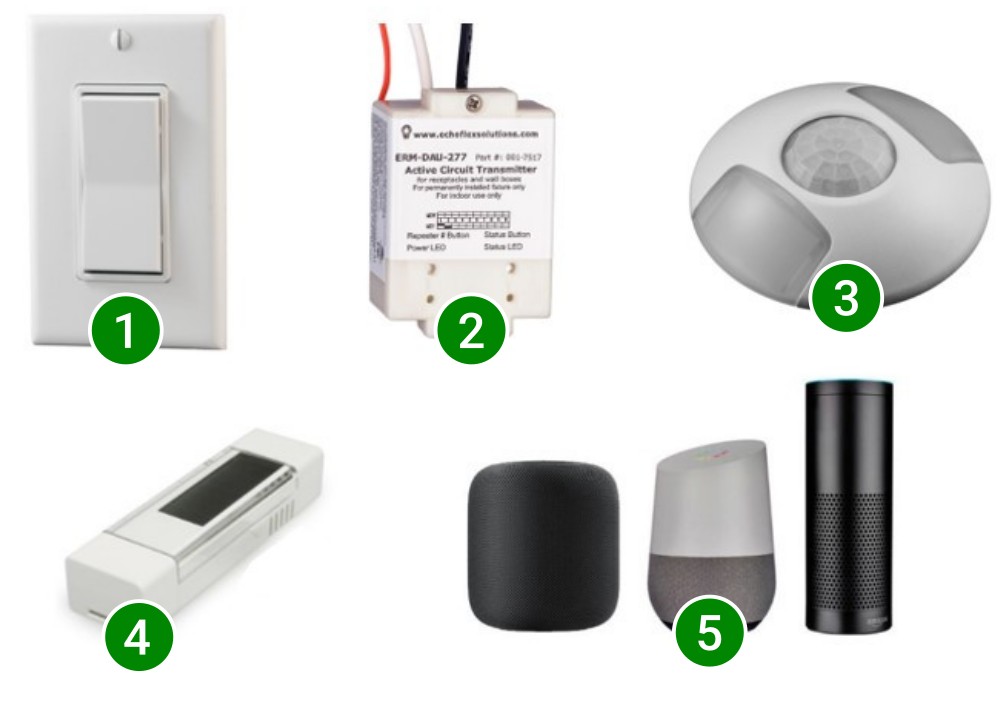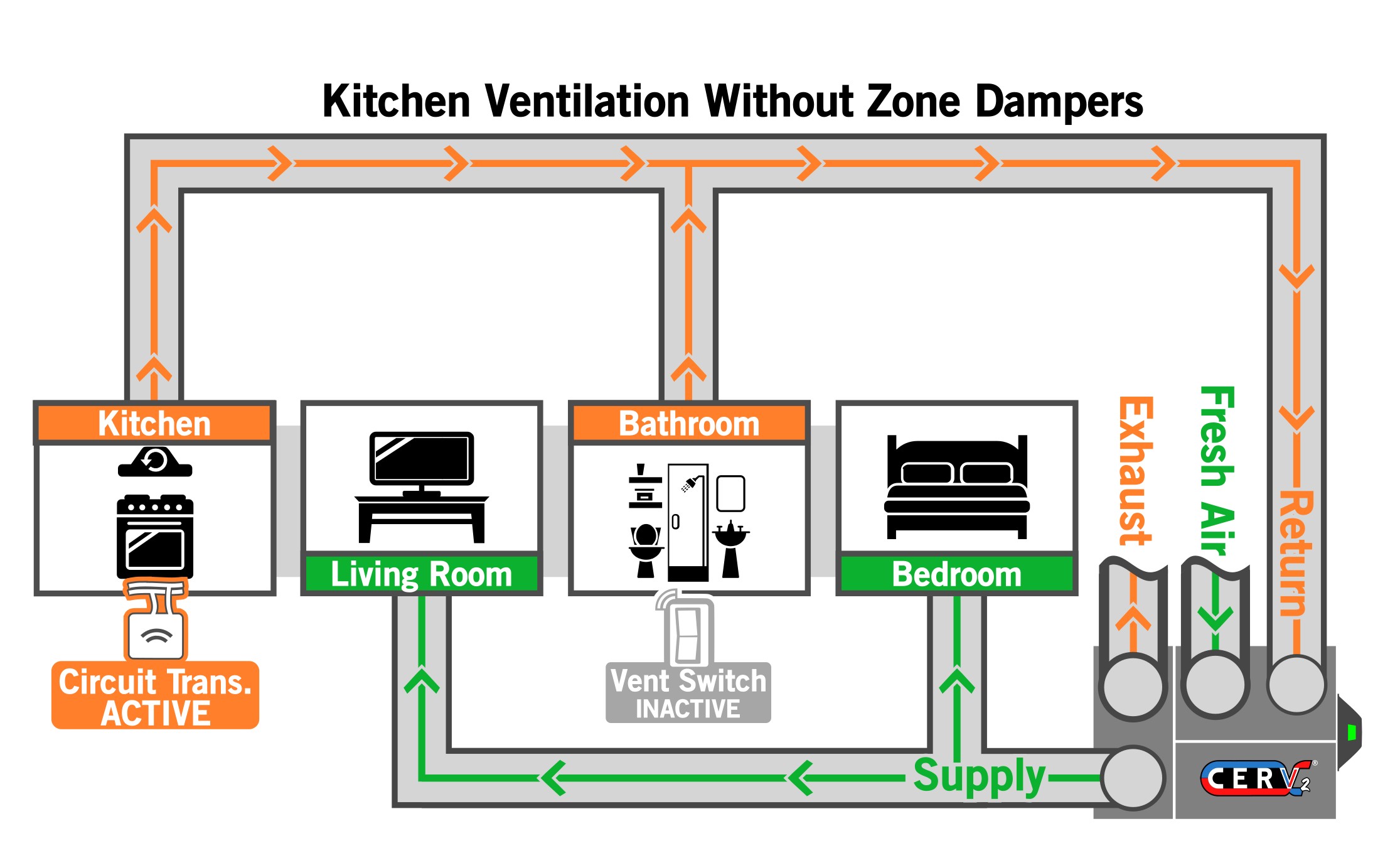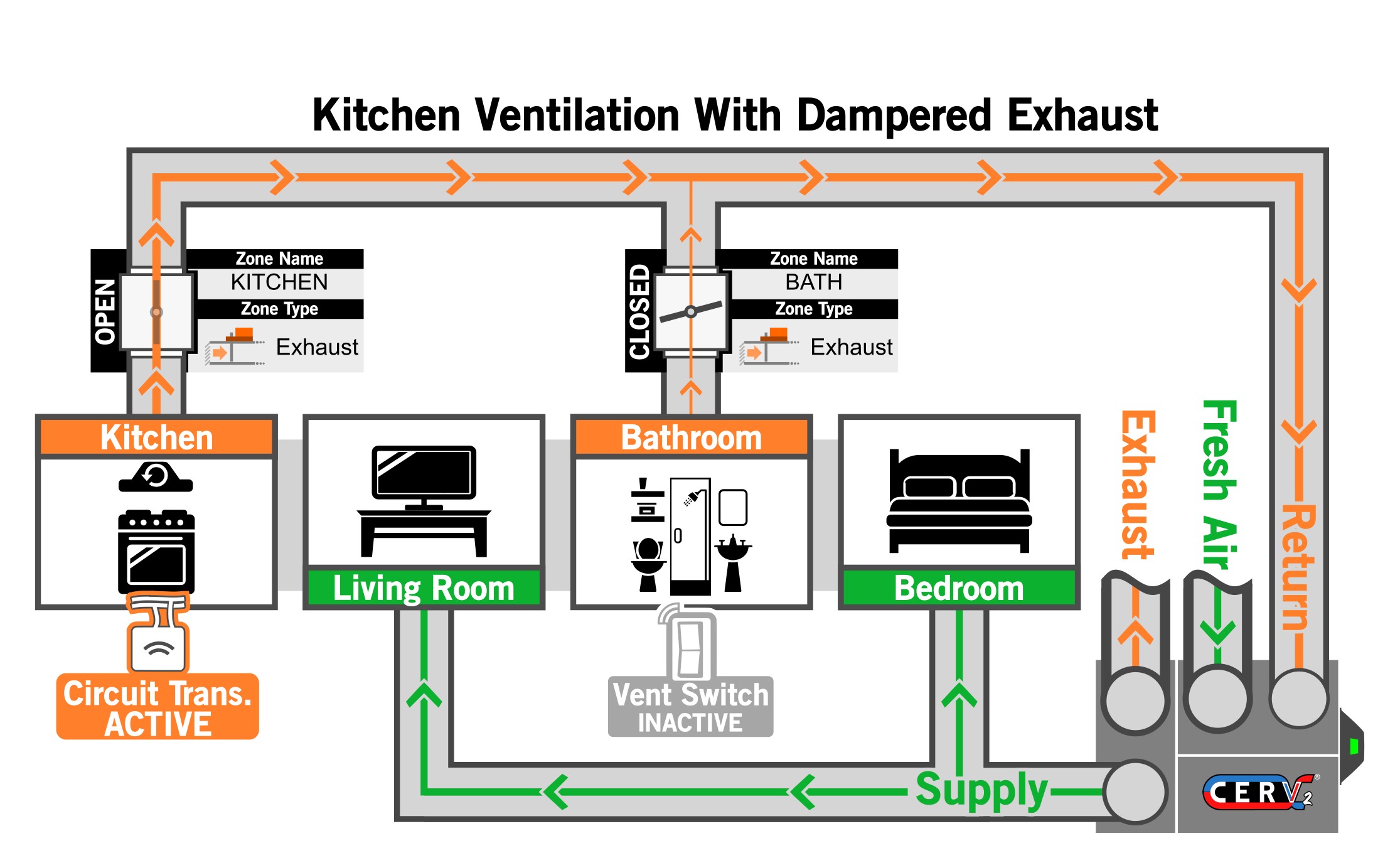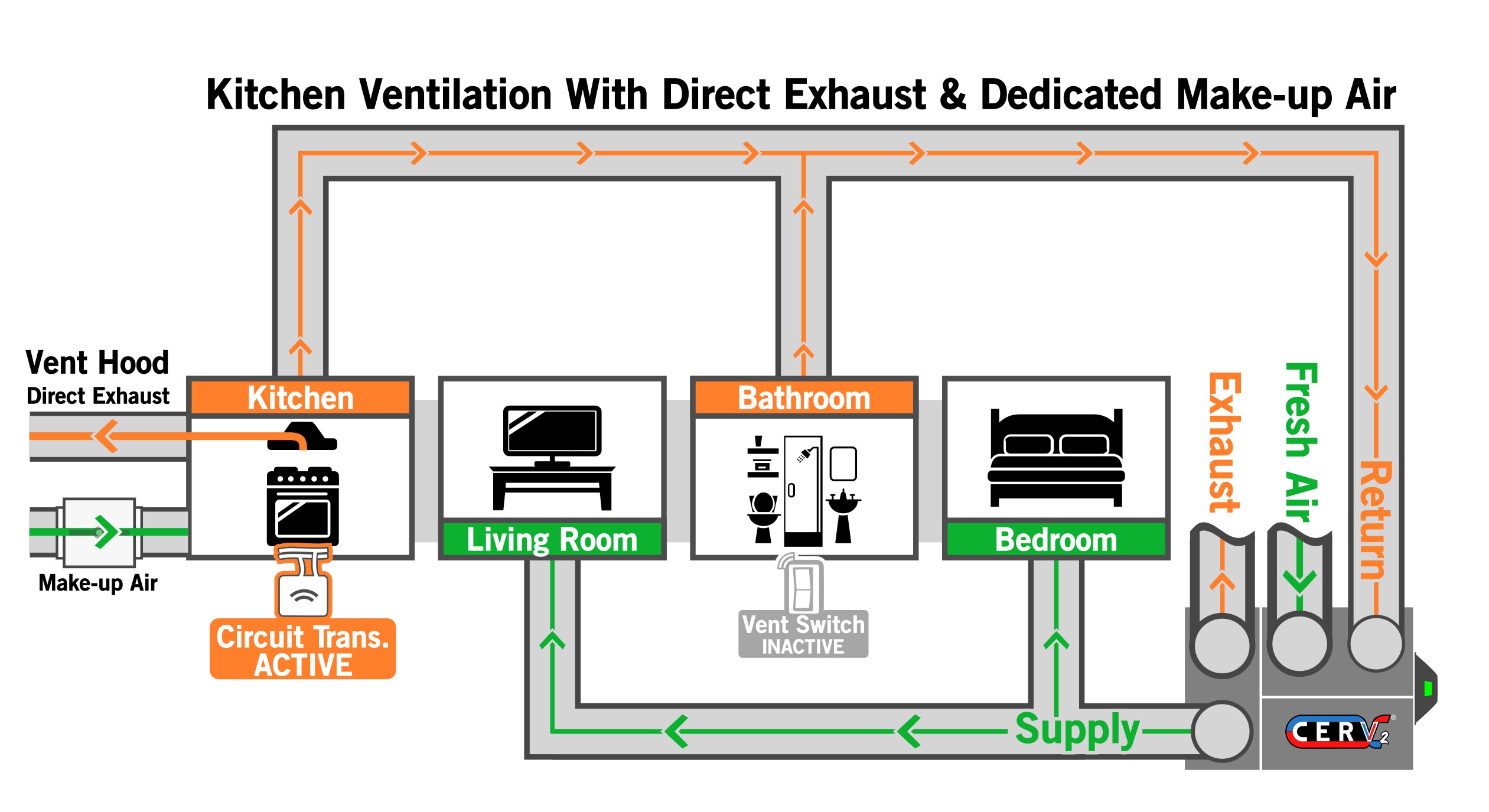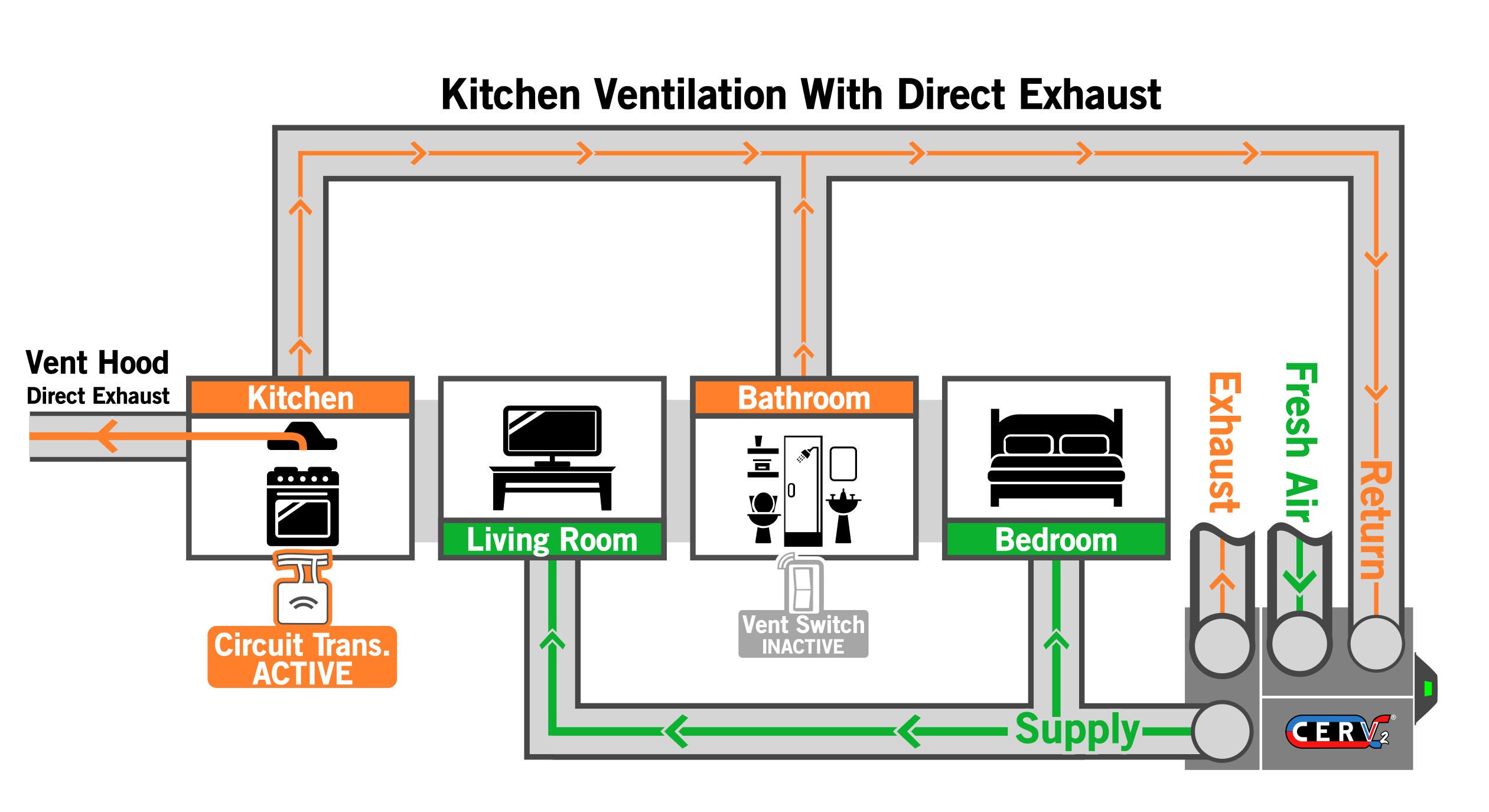Kitchens are exhausting! Literally. As Harvard Professor Daniel Lieberman (“Exercised”, 2021) explains, cooking increases metabolism 2 to 3 times sedentary (normal activity) level. It’s a good way to burn calories as long as we don’t consume too many of the chocolate chip cookies we bake. Burning calories at 2 to 3 times the rate of a sedentary person also means the cook needs 2 to 3 times as much fresh air to keep respiratory carbon dioxide and human VOCs dilute. Additionally, odors, moisture, combustion byproducts, and particulates are produced in varying levels.
All kitchens must be exhausted! There are two elements to venting a kitchen. Capturing and removing pollutants from the cooking surface via a kitchen hood and exhausting pollutants to the outside. ASHRAE 62.2-2019 prescribes 100cfm (cubic feet per minute) for “intermittent” kitchen exhaust. The CERV2’s 300cfm air flow capability makes the CERV2 an effective kitchen exhaust system during “triggered” ventilation events. Using the CERV2 for kitchen venting reduces penetrations in the home’s envelope, provides energy recovery, balanced filtered make-up air, and lowers overall pollutant levels in the house that reduce normal ventilation needs. The available ventilation trigger devices, zone dampers, and CERV smart controls give unmatched flexibility, control, and performance.
In this article, we describe different configurations recommended to exhaust kitchen air with a CERV2 smart ventilation system. Each configuration consists of a kitchen hood located at the cooktop and separate return registers for the CERV located in the kitchen. It is important to note that a kitchen hood can never be connected to the CERV’s return ducts. CERV kitchen returns must be a min. of 6’ from the cooktop and are best in the ceiling or high on a wall. The three recommended configurations are listed below:
1) Basic CERV2, all-electric kitchen exhaust
2) Damper enhanced CERV2, all-electric kitchen exhaust
3) Direct kitchen exhaust with dedicated make-up air in homes with CERV2 ventilation
4) Direct kitchen exhaust without dedicated make-up air in homes with CERV2 ventilation
CERV2 Ventilation Triggers
Before diving into the kitchen ventilation configurations, let’s take a look at the different ways ventilation can be triggered on the CERV2 for kitchen venting. The CERV2 can be seamlessly triggered in multiple manners with our plug-n-play wireless and wired sensors. Besides kitchen venting, these same devices can be used for bathroom or any other desired manually triggered ventilation applications. The wireless devices all use a local, low power wireless protocol built into the CERV2, so no internet is needed for them to work and power is generated from button presses or ambient light. Device pairing and setup is simple and straightforward and because each device is individually addressed, each can have unique settings. Further, these devices can be linked to zone dampers to provide targeted exhausting and fresh air supply.
1) Wireless, battery-free, wall switches can trigger kitchen venting with the press of a button. Homeowner selected vent duration time (eg, 15, 30 minutes) and fan speed (eg, 90, 100%) is programmed into the CERV2 for the switch triggered event.
2) An “active circuit transmitter” (ACT) can be placed in line with a powered circuit, i.e., a light or a kitchen recirculating or exhaust vent hood fan. The ACT senses vent hood fan operation and sends a wireless message to the CERV2 unit for a triggered vent mode. The CERV2 vents as long as the circuit is powered and the user can set a time length to continue venting after which the circuit has been turned off. Fan speed is also set.
3) Occupancy sensors can also be used. When one is in the vicinity of the cooktop or oven, a wireless message is chirped to the CERV2 for a triggered venting period. Occupancy sensors are more commonly used for bathroom ventilation.
4) The wireless remote Temperature & Relative Humidity sensor may be used to trigger ventilation when a spike in relative humidity is detected. Cooking often releases moisture, so if the sensor is in the same general area as the cooktop, this may tell the CERV to start venting.
For more detail, visit our options page.
 Each CERV2 sensor and switch is programmed by the user to a duration and fan speed for a triggered fresh air vent period. One switch can operate multiple dampers, and multiple switches and sensors can operate one damper. The limit is your imagination!
Each CERV2 sensor and switch is programmed by the user to a duration and fan speed for a triggered fresh air vent period. One switch can operate multiple dampers, and multiple switches and sensors can operate one damper. The limit is your imagination!5) You can also conveniently trigger venting from our CERV-ICE (CERV-Intelligently Controlled Environment) app on your smart phone, or ask Alexa! And, the CERV2’s internal CO2 and VOC sensors and our optional distributed wireless pollutant sensor are constantly on the watch for unhealthy air.
Wired input channels on the CERV2 are also available for 24V sense or dry contact to trigger ventilation. A manual switch or control signal from a smart home automation system are common ways to turn on ventilation in this manner.
Basic CERV2, All-Electric Kitchen Exhaust
The simplest and most basic kitchen exhaust recommended for all-electric kitchens is taken care of by a CERV2 and a recirculating kitchen hood with a grease screen filter. No zone dampers are used and no external penetration for the vent hood is needed. Equinox House has used this exhaust method for the past 10 years (see photo below). As a 2,100sqft home with 3 bathrooms, Equinox House (co-founder Ty Newell’s home) requires 250cfm of exhaust for managing all four areas simultaneously (3 baths at 50cfm per bath and 100cfm for the kitchen). The CERV2 can be triggered into an elevated ventilation exhaust air flow mode (using any of the ventilation trigger devices discussed previously) when any of the areas is in use and pulls air from all areas simultaneously. Even though the bathrooms may not need fresh air when kitchen exhaust is required, the CERV2 never wastes fresh air. “Excess” fresh air brought into a house during triggered vent periods delays the need for future fresh air since CO2 and VOC pollutant levels are lowered. Supply ducts in Equinox House are dedicated for the CERV and feed fresh air into bedroom and living areas. An option for homes with central air handlers is to feed the CERV’s supply into the central system for distribution around the house.
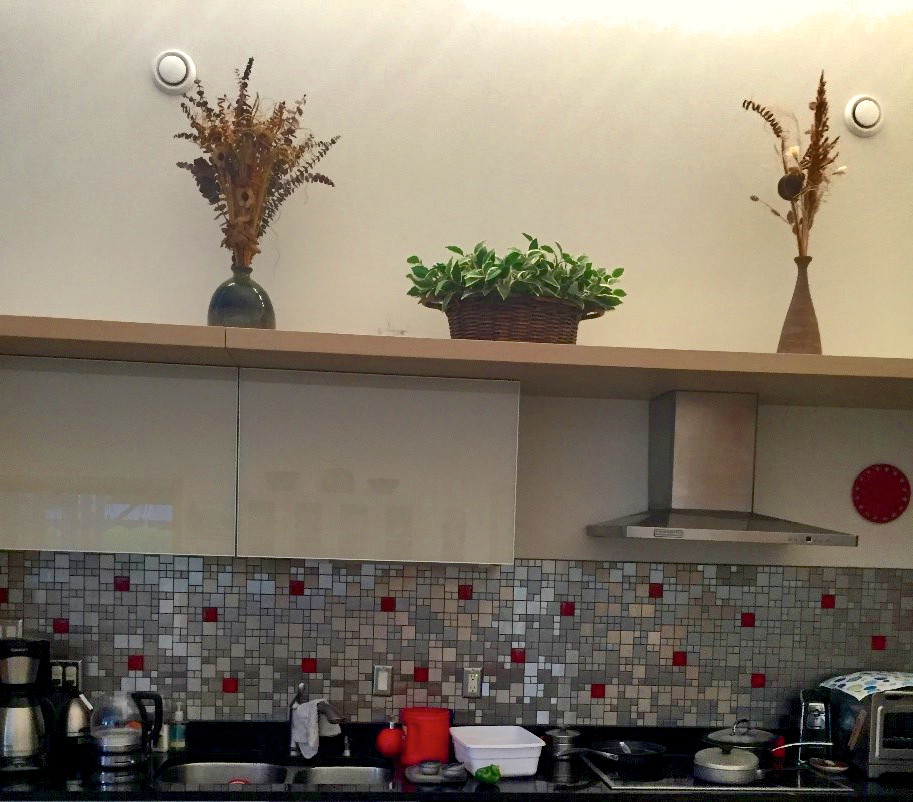 Two CERV exhaust vents located above the cooking countertop are part of the CERV2 return duct system in Equinox House. A recirculating vent hood above the cooktop has washable grease filters.
Two CERV exhaust vents located above the cooking countertop are part of the CERV2 return duct system in Equinox House. A recirculating vent hood above the cooktop has washable grease filters.Equinox House kitchen ventilation has used the basic exhaust method to vent its three bathrooms, laundry room, pantry and kitchen for 11 years. The kitchen is as active of a kitchen you will find anywhere with Ty’s wife, Deb’s, prolific, wonderful culinary skills constantly exercising all of the cooking appliances. The kitchen has no wall stains or grease residue or any hint of yesterday’s wonderful food odors. And in other areas, absolutely no mold or mildew in the bathrooms and laundry.
Equinox House, constructed in 2010, is a SIPs (structural insulated panels) home sealed to 0.4ACH50. Note how the “Equinox Overhang” totally shades the clerestories from the spring equinox to the fall equinox. Within two weeks of the fall equinox, clerestory shading disappears and full solar radiation is transmitted into the house, contributing to house heating needs until the spring equinox. The 8.2kW solar PV array supplies all house energy needs plus enough “excess” for 6,000miles of annual EV driving (1st gen 2012 Ford Focus EV gets 3 to 4 miles per kWh).
Damper Enhanced CERV2, All-electric Kitchen Exhaust
Our damper control options allow the CERV2 to do more targeted local spot ventilation and fresh air supply. This lets the CERV2 achieve designed air flow rates in larger homes with more spaces to vent. As homes increase above 2,500sqft and the number of bathrooms increases above 3, the need for dampers increases. Dampering increases ventilation efficiency because directing fresh air to occupied rooms, and exhausting air from regions with the highest pollutant concentration reduces air flow requirements to and from the house. A recirculating vent hood is also utilized in this configuration.
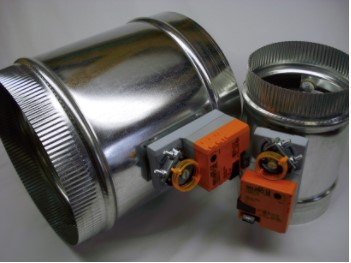 Build Equinox line of dampers (4”, 6”, and 8” diameters) allow more precise venting in larger home’s with more complex room layouts.
Build Equinox line of dampers (4”, 6”, and 8” diameters) allow more precise venting in larger home’s with more complex room layouts.Dampered ventilation exhaust for kitchens can be configured in multiple manners. The figure below shows a schematic for increasing exhaust airflow from a kitchen by partially closing a damper (or multiple dampers) in other return ducts. For example, a home with 5 bathrooms and a kitchen would need 350cfm of exhaust ventilation capacity without dampering to meet local exhaust ventilation standards. Partially closing dampers in each bathroom return duct allows the CERV2 to run at a reduced fan speed to meet kitchen 100cfm exhaust requirements. We recommend setting the closed position stop to 50%, which is an 80% flow reduction. Five unoccupied bathrooms would have a total of 50cfm airflow rather than 250cfm, allowing the kitchen to be ventilated at 100cfm.
Individual dampers are controlled by the CERV2 depending on which space is calling for ventilation. While dampers are not shown in the supply ducts for this example, they can be used. For this case you might direct the fresh air supply to the living room when the kitchen is calling for ventilation and to the bedroom when the bathroom has a ventilation need. If you’ve ever struggled to properly wire a two-way switch at either end of a hallway, you’ll be happy to learn our CERV2 technology eliminates confusing wiring logic diagrams and ladder circuits. Setting up a multiple sensors and actuators is simple and fast with CERV2 controls. Find additional details and configurations for zone dampers in the Zoning Guide
Direct kitchen exhaust with dedicated make-up air in homes with CERV2 ventilation
Homes with gas cooking should have higher exhaust ventilation levels than all-electric homes. Although ASHRAE62.2-2019 does not distinguish between all-electric and homes with gas cooking, it is common sense that more ventilation is required in any room with open combustion sources. One burner (5000Btu/hour) on a gas cooktop produces as much carbon dioxide as 5 people. In addition to carbon dioxide, combustion pollutants that trigger asthma (nitrogen, sulfur and unburned hydrocarbon compounds) and water vapor are released into the kitchen area.
Direct kitchen exhaust venting where the kitchen hood vents to the outside is recommended for homes with gas cooking to achieve this higher ventilation rate directly from the range hood. Some all-electric homes may have a preference to vent in this manner as well. Direct kitchen exhaust can be divided into direct exhaust greater than 400cfm and direct exhaust less than 400cfm. Most direct kitchen exhausts will be 400cfm or less, however, there are some kitchen exhaust hoods that rival the jet exhaust of a Boeing 747. A few other things to note for direct kitchen exhaust; a penetration is needed for the separate kitchen hood and another may also be required for the make-up air. Any kitchen exhaust done directly through the kitchen hood will not receive any energy recovery. These add cost to a project and are also an energy penalty, things to consider in using gas for cooking in addition to the impact on indoor air quality.
For direct exhaust systems rated greater than 400cfm, code requires adding a fresh air inlet for direct make-up air to replace kitchen exhaust air. These make up air systems can be dampered and can also have a fan powering the air flow. An electric heater is also sometimes used to warm the fresh air in winter. The schematic below shows this configuration. A portion of the make-up air can be provided by the CERV2 in addition to the dedicated make-up air unit. Generally, an active circuit transmitter would be used to trigger the CERV2 into vent mode whenever the hood is in use. While this configuration is required for hoods greater than 400cfm, it can be used for hoods below that level too.
Direct kitchen exhaust without dedicated make-up air in homes with CERV2 ventilation
Direct kitchen exhaust systems rated 400cfm or less in CERV2 homes do not need direct fresh air replacement for kitchen hood exhaust. The CERV2 and infiltration pathways into homes provide sufficient replacement air during operation of the direct exhaust fan. Direct kitchen exhaust impact on CERV2 operation is insignificant. This configuration is below. Again, for this configuration the active circuit transmitter is most commonly used to trigger CERV2 ventilation when the hood is in use.
We have run experiments in Equinox House, a very highly sealed home (0.4ACH50! see our ASHRAE article on sealing Equinox House), and found that a direct kitchen exhaust airflow elevates the CERV2’s fresh air fan’s flow while slightly reducing the CERV2’s exhaust fan airflow. We used a Panasonic FV-40 fan connected to a duct that exhausted house air directly outdoors while operating the CERV2 over a range of fan speeds and operation modes (venting and recirculation).
Direct exhausting does not impact the CERV2 during recirculation because the CERV2’s dampers isolate indoor air and outdoor air streams. We verified this with our direct exhaust fan operating in Equinox House. The Panasonic FV-40 held steady at 210cfm (+/- 5 cfm) as we varied the CERV2’s fan speed from 40% to 100% in recirculation mode. The CERV2’s recirculation air flow was unaffected by operation of the direct exhaust fan. We recommend operating CERV and CERV2 units in venting mode rather than recirculation mode anytime a direct exhaust fan is operating.
Direct exhaust operation of the Panasonic FV-40 fan with the Equinox House CERV2 unit operating in vent mode shifted the CERV2s fresh air at 100% fan speed from 247cfm to 257cfm fresh air flow while reducing the CERV2’s exhaust air flow from 268cfm to 231cfm. Note that the CERV2 shifted from +8% to -11% air flow imbalance (relative to exhaust air flow stream). CERV2 controls allow fan speed offsets to be selected for the CERV2’s fresh air and exhaust air fans, however, this level of fan imbalance is minor.
Imbalanced air flows do not impact the CERV2’s heat pump recovery system in the same manner as air flow imbalance degrades HRV and ERV units. The CERV’s heat pump accommodates imbalances in fresh air and exhaust air streams because the heat pump’s refrigerant adjusts its temperature relative to air temperatures. HRV and ERV air flow imbalance has a direct impact on HRV/ERV energy exchange efficiency. We operated the CERV2’s fans at lower speeds in order to see how 200cfm of direct exhaust would impact HRV/ERV airflows operating at ASHRAE62.2 ventilation levels (about 100cfm for Equinox House). We found the air flow imbalance to be 38 to 55% for ventilator air flows in the 80 to 100cfm range. Direct kitchen exhausting of 200cfm is a significant impact on low flow HRV/ERV systems.
Summary
CERV2 homes are effectively ventilated and healthy indoor air environment are automatically maintained. Our CERV2 technologies allow you to design a healthy kitchen environment suited to your needs! Give us a call so we can help.





